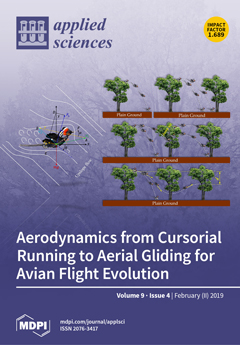Open AccessFeature PaperArticle
Successful Release of Voriconazole and Flavonoids from MAPLE Deposited Bioactive Surfaces
by
Irina Negut, Anita Ioana Visan, Camelia Popescu, Rodica Cristescu, Anton Ficai, Alexandru Mihai Grumezescu, Mariana C. Chifiriuc, Ryan D. Boehm, Dina Yamaleyeva, Michael Taylor, Roger J. Narayan and Douglas B. Chrisey
Cited by 6 | Viewed by 3431
Abstract
We explored the potential of biomimetic thin films fabricated by means of matrix-assisted pulsed laser evaporation (MAPLE) for releasing combinations of active substances represented by flavonoids (quercetin dihydrate and resveratrol) and antifungal compounds (amphotericin B and voriconazole) embedded in a polyvinylpyrrolidone biopolymer; the
[...] Read more.
We explored the potential of biomimetic thin films fabricated by means of matrix-assisted pulsed laser evaporation (MAPLE) for releasing combinations of active substances represented by flavonoids (quercetin dihydrate and resveratrol) and antifungal compounds (amphotericin B and voriconazole) embedded in a polyvinylpyrrolidone biopolymer; the antifungal activity of the film components was evaluated using
in vitro microbiological assays. Thin films were deposited using a pulsed KrF* excimer laser source which were structurally characterized using atomic force microscopy (AFM) and Fourier transform infrared spectroscopy (FTIR). High-quality thin films with chemical structures similar to dropcast ones were created using an optimum laser fluence of ~80 mJ/cm
2. Bioactive substances were included within the polymer thin films using the MAPLE technique. The results of the
in vitro microbiology assay, which utilized a modified disk diffusion approach and were performed using two fungal strains (
Candida albicans American Type Culture Collection (ATCC) 90028 and
Candida parapsilosis American Type Culture Collection (ATCC) 22019), revealed that voriconazole was released in an active form from the polyvinylpyrrolidone matrix. The results of this study show that the MAPLE-deposited bioactive thin films have a promising potential for use in designing combination products and devices, such as drug delivery devices, and medical device surfaces with antifungal activity.
Full article
►▼
Show Figures





